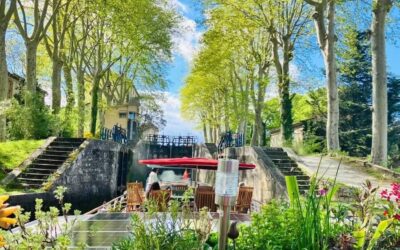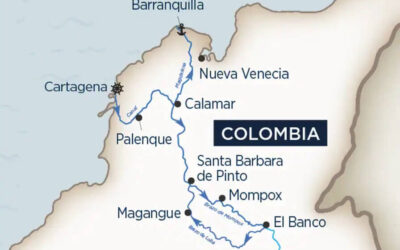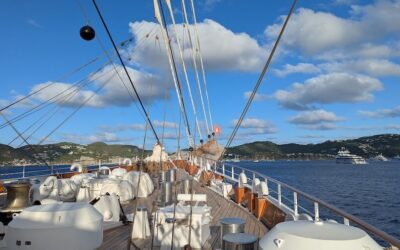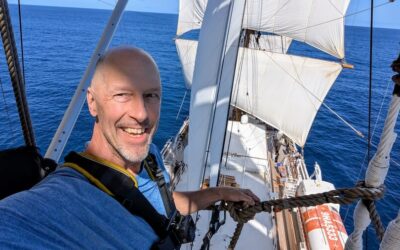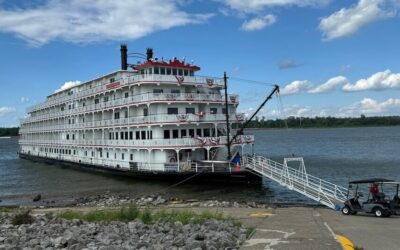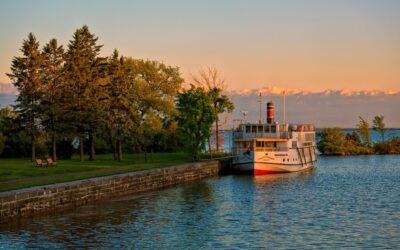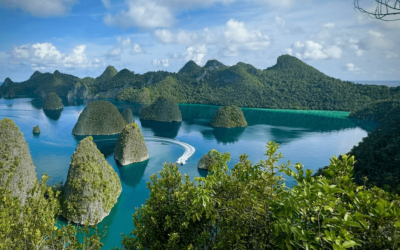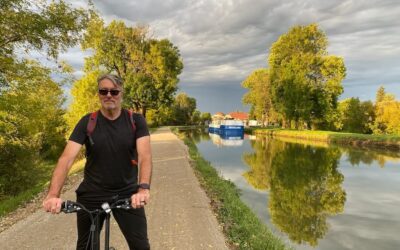Swan Hellenic Style
By Ted Scull.
Swan Hellenic’s origins, offering culturally rich cruises, date back to 1954 when two brothers named Swan began chartering Greek and Turkish ships to explore the Eastern Mediterranean, the Hellenic world of antiquity. More recently, the year-round program of culturally rich cruises have fanned out beyond the Med. to Northern Europe and through Suez to the Indian Ocean and Southeast Asia.
The lecture program always was — and still is — Swan Hellenic’s great strength. Every cruise hosts three to five onboard guest speakers aboard appropriate to the itinerary. On a recent voyage that called at English, Irish and French ports, lecturers included an historian, writer, military specialist and an Anglican clergyman — and nearly all talks were both informative as well as entertaining.
Entertainment is kept low-key to include a pianist, harpist, a classically trained quartet, house musicians, a crew show, a cinema, team quizzes and bridge instruction.
It was on Swan Hellenic’s chartered Orpheus in 1991 that I discovered my favorite style of cruising (vs crossings) on an itinerary that called at Greek, Turkish, Syrian, Egyptian and Jordanian ports. At breakfast on the first morning, the maitre d’ showed me to a table soon to be joined by Robert Runcie, the former Archbishop of Canterbury, and his wife. He was traveling as a guest lecturer on Byzantine history. If this was to be a taste of Swan-style democracy, I was going to cotton onto it.
Subsequently, highlights of that cruise included two-day overland trips to Damascus and Aleppo in Syria, and in Jordan, visiting the hidden valley at Petra and standing amongst Jerash’s fantastic ruins as night fell.
Orpheus to Minerva
In 1996, Swan Hellenic took on the charter of the 352-passenger Minerva, the line’s present ship, a vessel originally designed to serve as a Russian spy ship, then completed to Swan’s specifications.
Gone was the Greek décor and Anglo-Greek food and enter the English country-house hotel. Minerva could boast the largest library afloat, and the main lounge held all passengers for the lecture program that might run to four talks on a full sea day. Attendance, of course, was not mandatory but it might as well have been as most showed up or watched on their cabin televisions. That sort of enthusiasm engenders a shared cruise experience.
Business boomed and by 2003, Swan took on the larger 688-passenger Minerva II (that had formerly traded as Renaissance Cruises R Eight). But by 2007, the giant Carnival Corporation, Swan Hellenic’s owners since the take-over of P&O, had pulled the plug on the one-ship operation.
Never underestimate Swan loyaltists. Sir Jeffery Sterling, former chairman of P&O, came to the rescue, buying the Swan name and passenger list, and All Leisure, a UK holding company, got hold of a ship that turned out to be none other than the original Minerva. The cruise program resumed in May 2008. Most who knew the original Minerva, including me, delighted in the return of the smaller ship and its wonderful collection of paintings, prints, maps and photographs.
Ship’s Tour
Minerva’s country hotel atmosphere is perhaps best typified by Shackleton’s Bar, a roomy U-shaped, light-wood-paneled lounge with polished wood floors and oriental-style carpets. A pianist plays in one corner and a stunning set of black and white photographs depicting Ernest Shackleton’s aborted Antarctic expedition and rescue are mounted on the walls.
Forward on the same Main Deck, the Darwin Lounge, held up by white fluted ionic columns, offers theater-style seating for lectures and evening entertainment, and otherwise, lounge-type seating, wooden dance floor, and bandstand.
On Bridge Deck portside, the Wheeler Bar pays homage to Sir Mortimer Wheeler, one of Swan’s founders – scholar, intrepid traveler, and later chairman. One section offers wicker furniture set amidst potted palms and another, overstuffed armchairs and couches facing mahogany tables.
On the same deck, the long gallery-style library, with the lecturers’ spouses in charge, is lined with open book shelves, comfortable reading chairs, reference books, and flat surfaces for studying atlases and using the computer stations. If buying an e-mail package, the rates are remarkably inexpensive. Next-door are the paneled smoking lounge with button leather chairs and card room for bridge players.
High up on Promenade Deck, the Orpheus Lounge serves as an observatory with 270-degree views and a bar with music at night. An outdoor promenade, ideal for that constitutional, wraps around the Orpheus Lounge.
Dining is open seating, a boon for meeting fellow passengers and a boon for single travelers. Meals are invariably lively social events full of good conversation. In the main restaurant, jacket and tie are de rigueur at dinner, while the informal Veranda, an attractive buffet restaurant, is always casual and offers additional outdoor seating in fine weather. Food is good to very good and will suit most American and British tastes.
Cabins are of mostly moderate size with 100 outside and an additional 44 with balconies. Most have showers (some have full-size baths), fridges, safes, and TVs with BBC and Euro news channels.
A swimming pool, located aft, is surrounded by wooden chairs and tables under umbrellas. Additionally, the Promenade Deck up by the funnel has blue and white cushioned plastic deck chairs shared with a small glassed-in gymnasium.
The passenger list is largely British, 60 and up, and cruise packages, including air and transfers, are available to North Americans. The atmosphere is a well-mannered one, and most passengers enjoy the social life and companionship in the lounge bars and during meals. Days at sea bring out avid readers who find ample places to roost.
Embarkation
On a blustery but sunny afternoon in late July, my wife and I embarked in Dover, southeast of London, for a two-week cruise that would circle Ireland and then visit Northern France before returning to England.
Our cabin was a Superior grade outside with a large mirrored picture-window facing the promenade deck, a walk-in closet and a tub bath for a favorite end-of-the-day soak after traipsing across the countryside.
We set sail at 3 p.m., passing beneath the famous White Cliffs of Dover for the overnight run through the English Channel to Dartmouth. After sailing up the impossibly narrow River Dart, filled with small boats and fringed by steep green hills, the ship anchored for the day below the Britannia Royal Naval College.
Swan Hellenic includes shore excursions in the cruise fares and offers optional extra tours at a fair price. Our destination was mystery writer Agatha Christie’s Greenway, once her home and a repository for her books and travel scrapbooks that gave rise to exotic Eastern Mediterranean and Egypt settings in her novels. The homey Georgian house, set in gardens that tumble down to the Dart, was first opened to the public by the National Trust in early 2009.
During the sea day en route to Cobh (formerly Queenstown) in Ireland, we had our first lectures – on Viking incursions, subsequent military invasions by the Spanish and French, and later Irish emigration from our next port to North America and Australia.
Ireland: South & West Coast
We docked at Cobh’s railway pier, the same spot whence 2.5 million Irish had embarked for new lives in North America and Australia. Today, the station houses the Heritage Centre telling the Queenstown Story using drawings, photographs, Movietone News footage, and models of ships and their accommodations. A separate section recalls the off-shore sinking of the Cunard liner Lusitania in May 1915 by a German U-boat with a loss of 1,198 lives, including 128 U.S. citizens.
As it is Swan policy not fill excursion buses to capacity, we were just 32 on the trip to Kinsale, a historic port during the wine trade days and now a colorful small town best known as Ireland’s gastronomic center and a yachting harbor. Just out of town, we visited the imposing pentagonal Charles Fort, built in the late 17th century as a coastal defense against French invaders.
The Irish theme continued with a day’s call at Glengarriff and a fetchingly scenic coastal drive to Castletownbere, the country’s second largest fishing port after Killybeggs our next port of call. The deep-sea fleets fish for cod, hake, haddock, salmon, sole and tuna, with mussel farming close in shore. It’s a treat to walk amid the activity of unloading the catch and making boat repairs.
During the passage around the top of Ireland, we attended lectures on early Irish art such as elaborate metalwork in gold, silver and enamel and beautiful scrollwork exemplified by the outstandingly beautiful Book of Kells on display in Dublin. Another talk covered the Scottish invaders, English landholders, Anglo-Irish conflicts and the troubles between the Catholics and Protestants that continue up to the present day.
Belfast & Dublin
During our call at Belfast, Swan provided a free shuttle bus to and from the center of town for those who wished to stay ashore following the tour. Once one of the world’s most important shipbuilding centers, the city shows off its architecturally rich Donegal Square and connecting shopping streets.
We took the tour to Mount Stewart, a National Trust property with its owner still in residence. Built between 1744 and 1820, the imposing seaside house, containing beautiful furnishings, is set amongst sloping landscaped gardens that surround a central lake.
Sailing overnight to Dublin, we docked in the container port. As we had been here several times before, we availed ourselves of the free shuttle to Kildare Street. The city center is compact enough to enjoy an on-foot tour of the 18th-century Georgian architecture typified by the lovely residential squares and row houses with brightly painted doors.
For a different sort of outing, we visited 140-year-old Kilmainham Goal where the leaders of the Irish rebellions were incarcerated and sometimes executed. It serves as a museum of the history of Irish nationalism as well as view into brutal social conditions of the day, including jailing children because their parents were also imprisoned.
After a pub supper and a pint of Guinness on O’Connell Street, the city ‘s main thoroughfare, we returned to the Minerva for a late evening sailing through the Irish Sea en route to the Isles of Scilly, strung out off the southwestern-most point of England.
Isles of Scilly
Disembarking by launch, we landed within easy walking distance of Tresco Abbey Gardens, established in the early 19th century as a fabulous repository of sub-tropical plants and flowers, warmed by the Gulf Stream and protected from strong winds by towering stands of Monterey Pines. The various landscaped gardens exhibit colorful species from the Mediterranean, South America and Australasia, creating a delightful botanical medley.
Onto La Belle France
To prepare for our landings at St. Malo and Caen, the military historian described the events of World War II in a talk about the Battle of the Atlantic and another on the Allied landings at Omaha and Utah beaches, beginning with the elaborate preparations for D- Day (June 6, 1944) and how victory was snatched from possible disaster.
We called first at Caen, where the excursion took us on-site to Gold Beach, Arromanches–Les Bains. Here we viewed the coastal military installations, remnants of the artificial Mulberry Harbor that provided protection from the stormy seas during the Normandy landings and a museum housing a scale model of the operations.
St. Malo provided a far more peaceful visit. Squeezing through a lock into the inner basin, Minerva tied up beneath the walls of the old town, faithfully reconstructed after the WWII bombings. Within, the narrow medieval streets led to a lively quarter packed with stalls and outdoor seafood restaurants serving heaps of crabs, langoustines, mussels and oysters.
The day’s outing headed inland through the hilly Breton countryside to Dinan, a medieval river port surrounded by 11th-century walls and with a labyrinth of narrow streets lined by timbered houses. From the ramparts we looked down on the lower town clustered along the River Rance that connects the city to the sea.
Wrapping it Up
In a brief two-week period, Minerva had taken us to a wide variety of small villages and relatively large cities; landscapes that included rugged coastlines, inland farmlands, and river valleys; and an isolated island — all accompanied by expert interpretation on the subjects of ancient Celtic and Viking culture, Irish literature and art, European wars and religious conflicts.
As most places seemed so peaceful today, it was sometimes hard to imagine the conflicts, unrest and destruction of the past until we visited Kilmainham Goal, planted our feet on the Normandy beaches or heard the tales of war from one of the veterans aboard ship who had been there as a young man.
A Swan Hellenic cruise has an uncanny way of bringing passengers together to enjoy a shared experience that engenders a lively social life — at meals, gatherings on deck and on tour.
Click here for more info on Swan Hellenic.
© This article is protected by copyright, no part may be reproduced by any process without written permission from the author. All Rights Reserved. QuirkyCruise.com.Don’t miss a post about small-ship cruising, subscribe to QuirkyCruise.com for monthly updates & special offers!

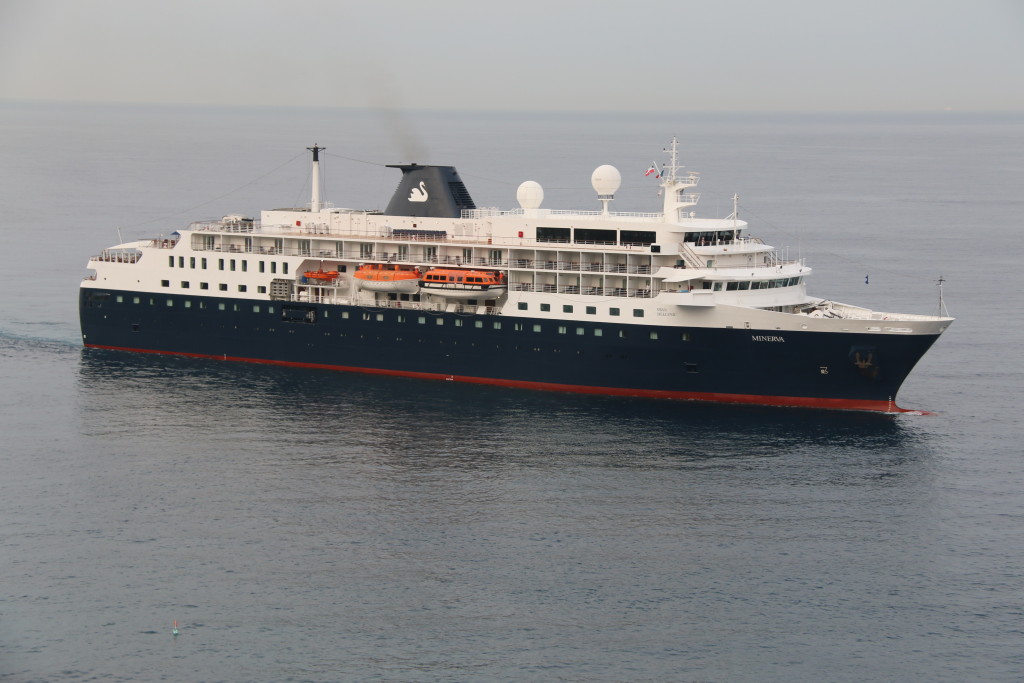
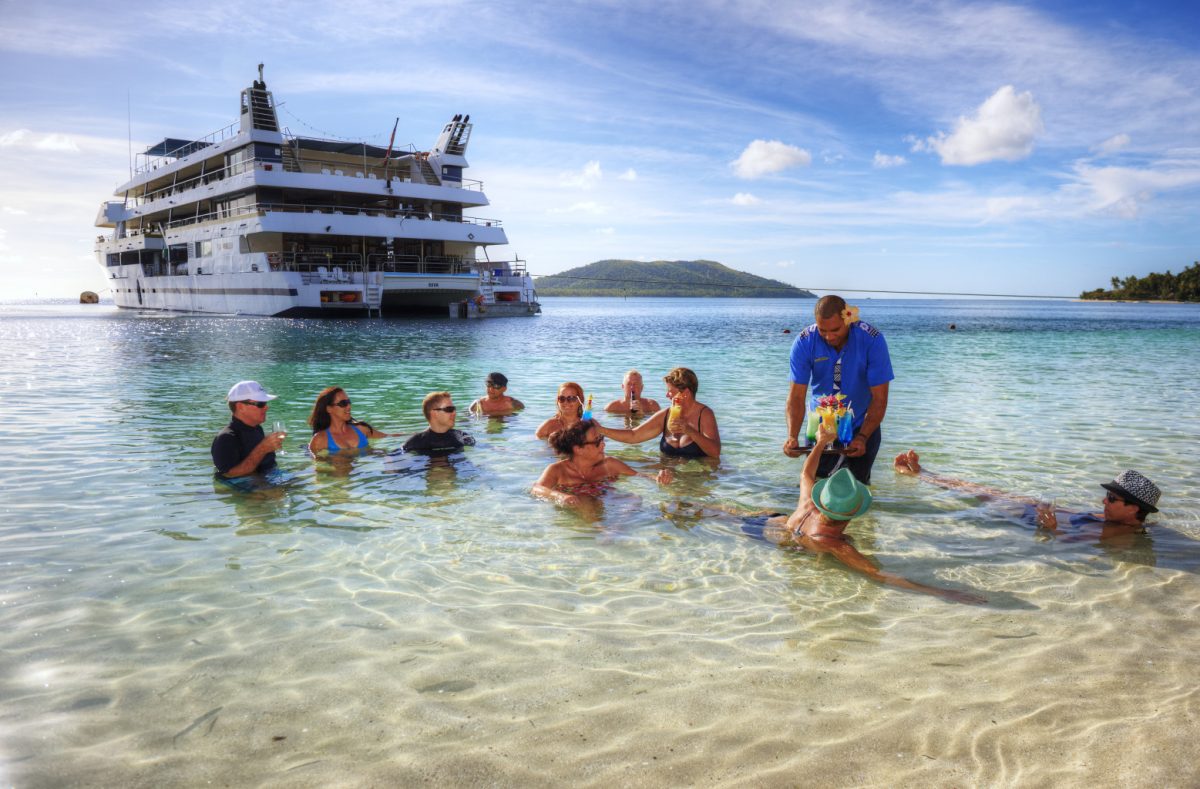
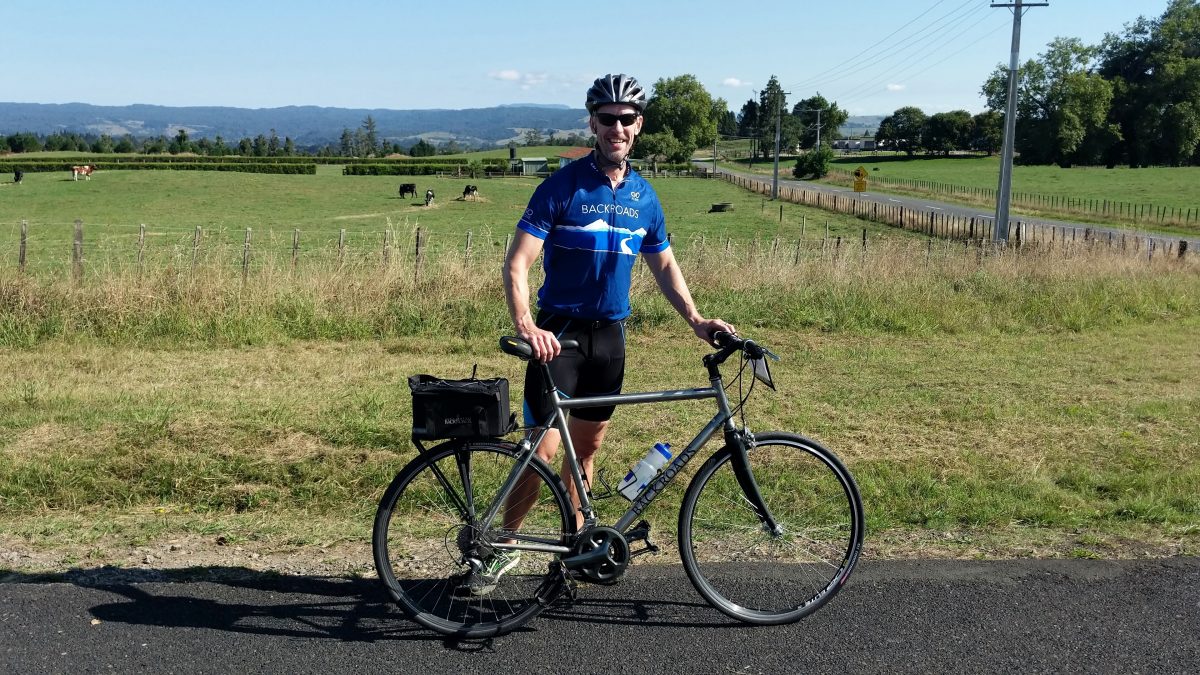
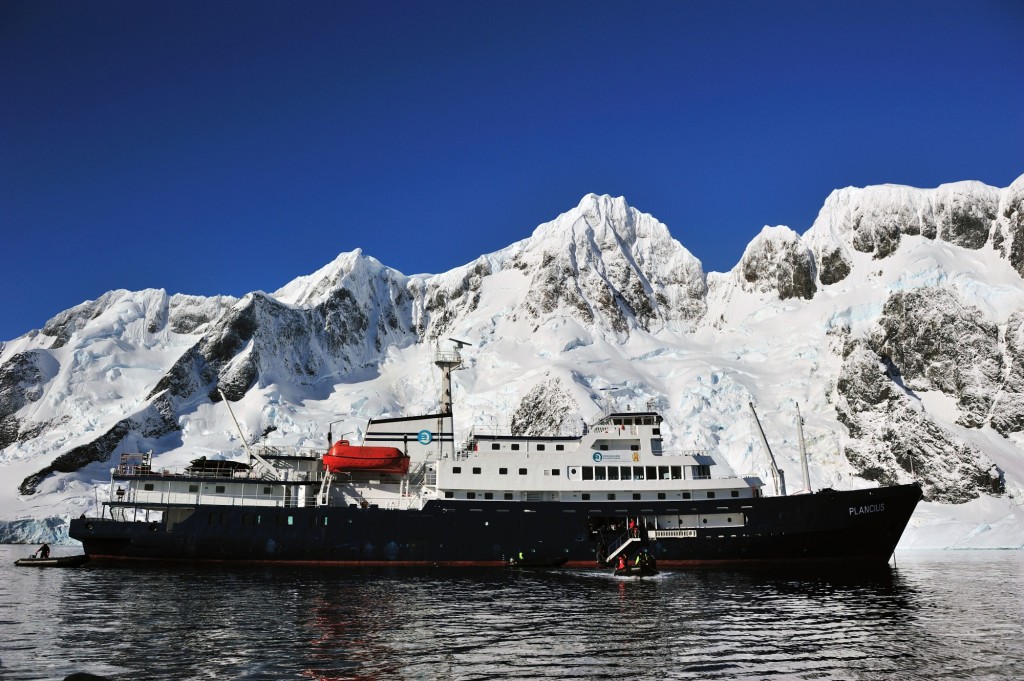
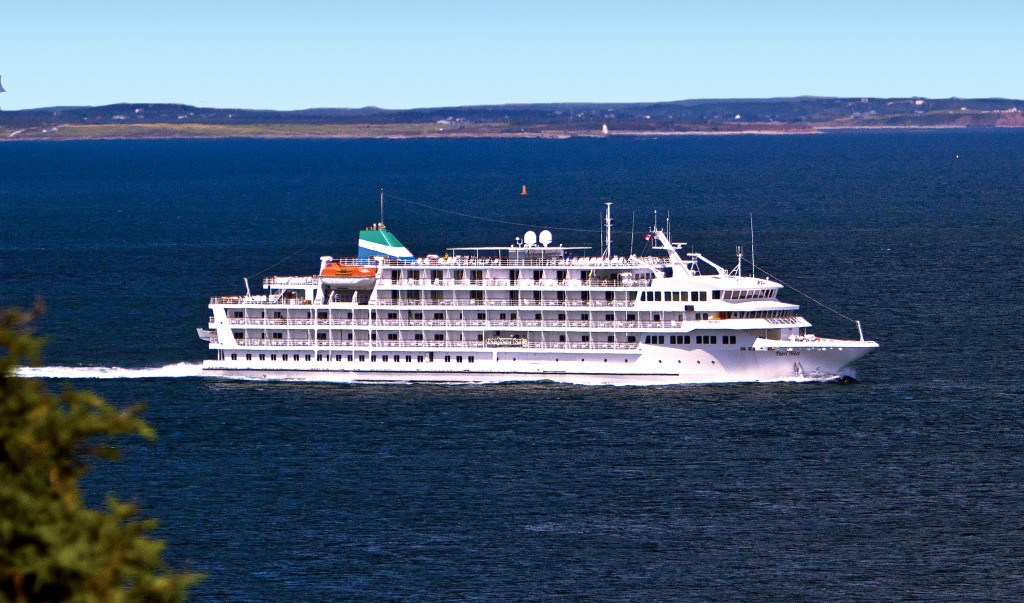
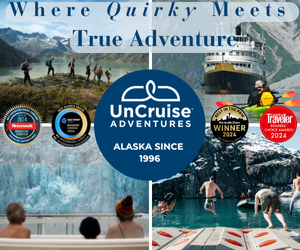
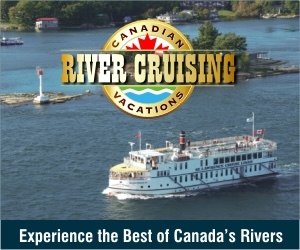

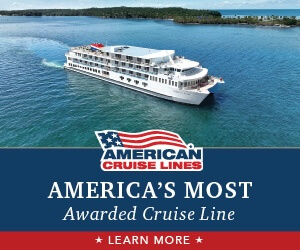




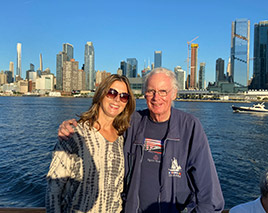 HEIDI SARNA
HEIDI SARNA
